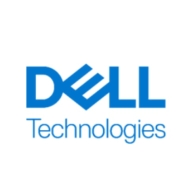


Dell OpenManage Integration for VMware vCenter and Densify cater to IT infrastructure optimization. Dell OpenManage tends to have the upper hand in environments focused on VMware hardware management, while Densify proves advantageous with its AI-driven analytics for resource optimization.
Features: Dell OpenManage Integration offers streamlined server management, automated processes, and comprehensive lifecycle tools. Densify provides AI-based recommendations, predictive analytics, and cloud optimization capabilities.
Ease of Deployment and Customer Service: Dell OpenManage integrates easily with VMware vCenter, offering straightforward deployment and solid customer service. Densify requires more comprehensive deployment steps across multiple platforms but provides customer service noted for technical proficiency.
Pricing and ROI: Dell OpenManage offers competitive pricing and solid ROI for organizations leveraging Dell infrastructure. Densify presents higher initial costs, but its advanced capabilities deliver substantial ROI through cloud resource optimization.


IBM Turbonomic offers automation, planning, and right-sizing recommendations to streamline resource management, improve efficiencies, and optimize costs across virtualized environments and cloud platforms.
IBM Turbonomic is valued for its capability to optimize resource allocation and monitor virtual environments efficiently. It facilitates automated decision-making in VM sizing, load balancing, and cost optimization for both on-premises and cloud deployments. Users can leverage insights for workload placement, ensure peak performance assurance, and effectively right-size across VMware and Azure. The ongoing transition to HTML5 aims to improve visual and navigational ease, while expanded reporting features are anticipated. Opportunities for improved training, documentation, and integrations enhance platform usability and functionality.
What Are the Key Features?In finance, IBM Turbonomic aids in maintaining platform efficiency during market fluctuations. Healthcare organizations leverage its capability for resource optimization during high-demand periods to enhance patient care support. Retailers use it for planning in peak seasons, ensuring resources align with fluctuating demand to maintain performance continuity.
Densify is a hybrid cloud and container resource management platform that makes workloads self-aware of their precise resource requirements and automates the resource management and selection process. This solution helps you control your cloud spend and also helps your apps perform and scale better. Densify enables you to match your cloud requirements with the optimal cloud supply. Additionally, Densify is the only technology that leverages patented, predictive machine learning-powered analytics to perform advanced modeling of workload patterns, and provide precise optimization directives. It is ideal for cloud engineers, container platform owners, and IT finance.
Densify works by:
Densify Features
Densify has many valuable key features. Some of the most useful ones include:
Densify Benefits
There are many benefits to implementing Densify. Some of the biggest advantages the solution offers include:
We monitor all Virtualization Management Tools reviews to prevent fraudulent reviews and keep review quality high. We do not post reviews by company employees or direct competitors. We validate each review for authenticity via cross-reference with LinkedIn, and personal follow-up with the reviewer when necessary.